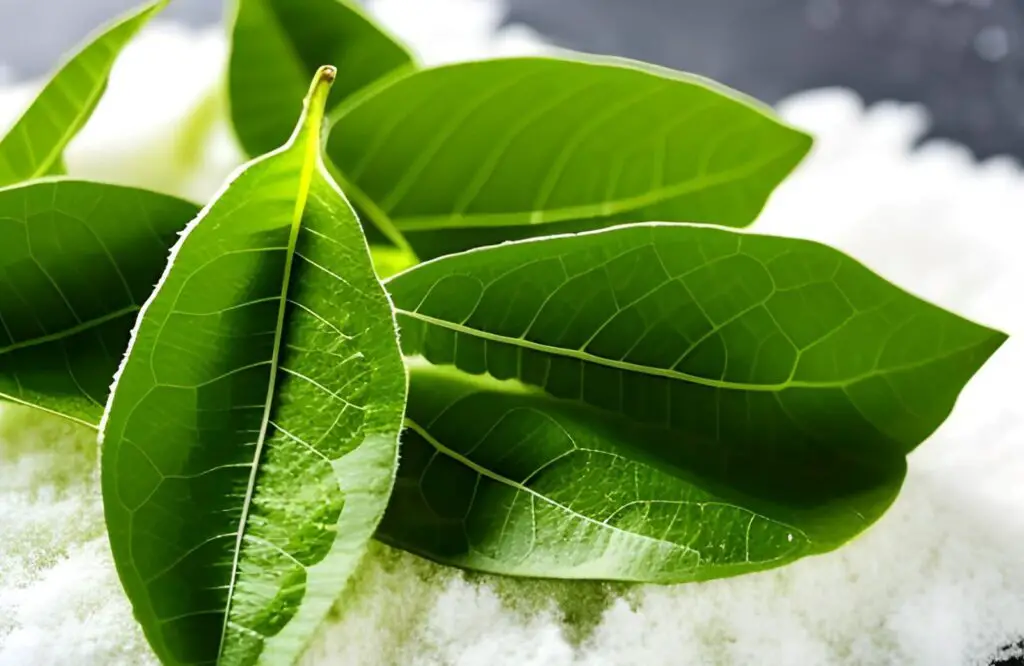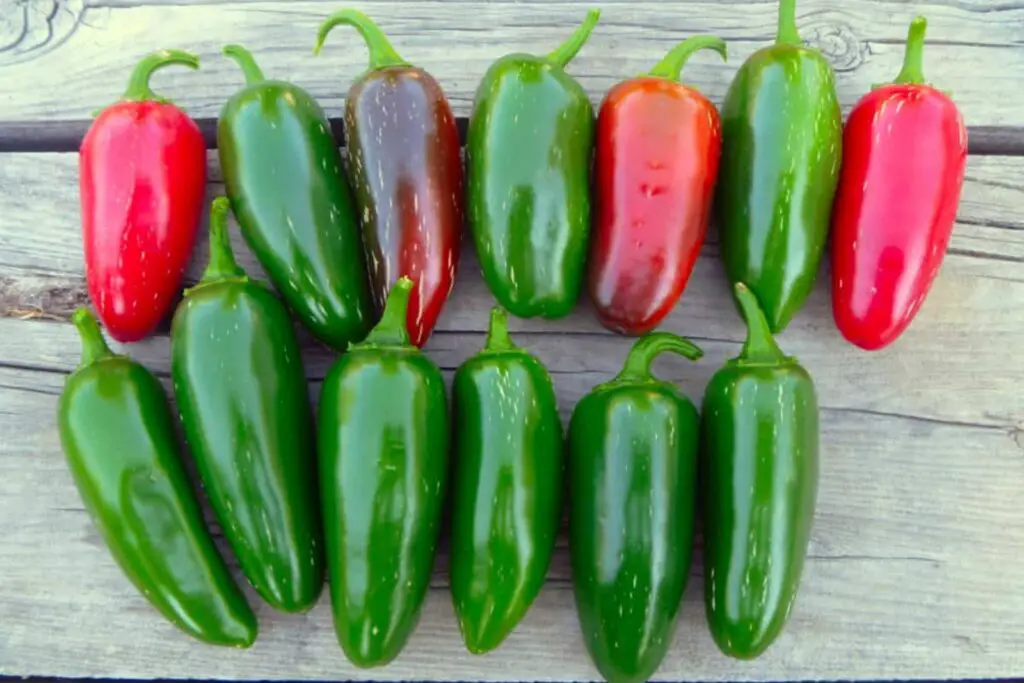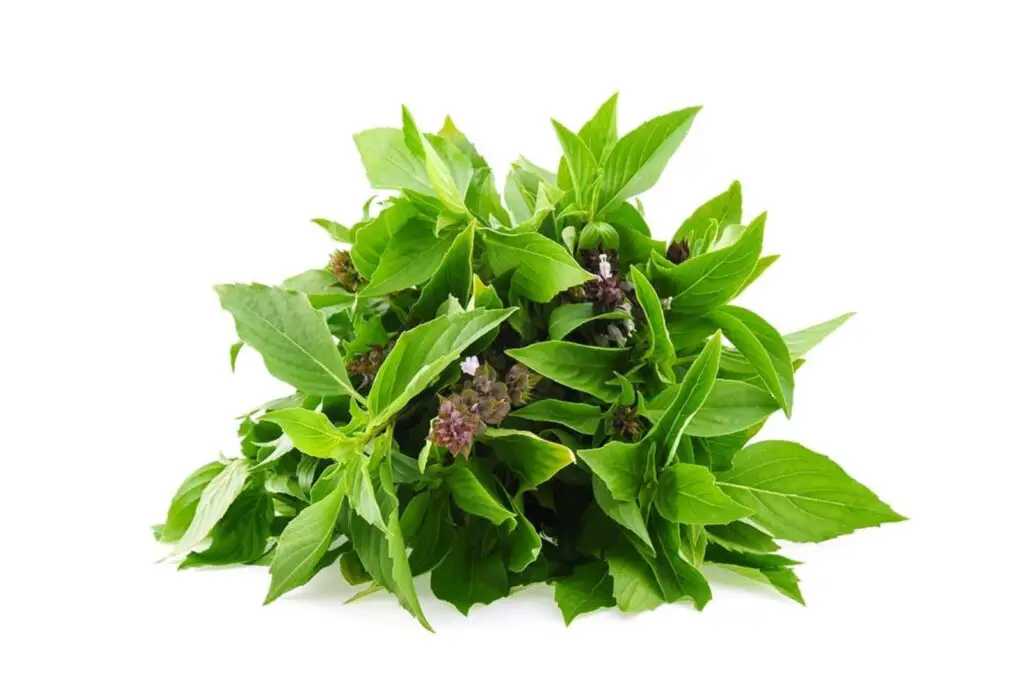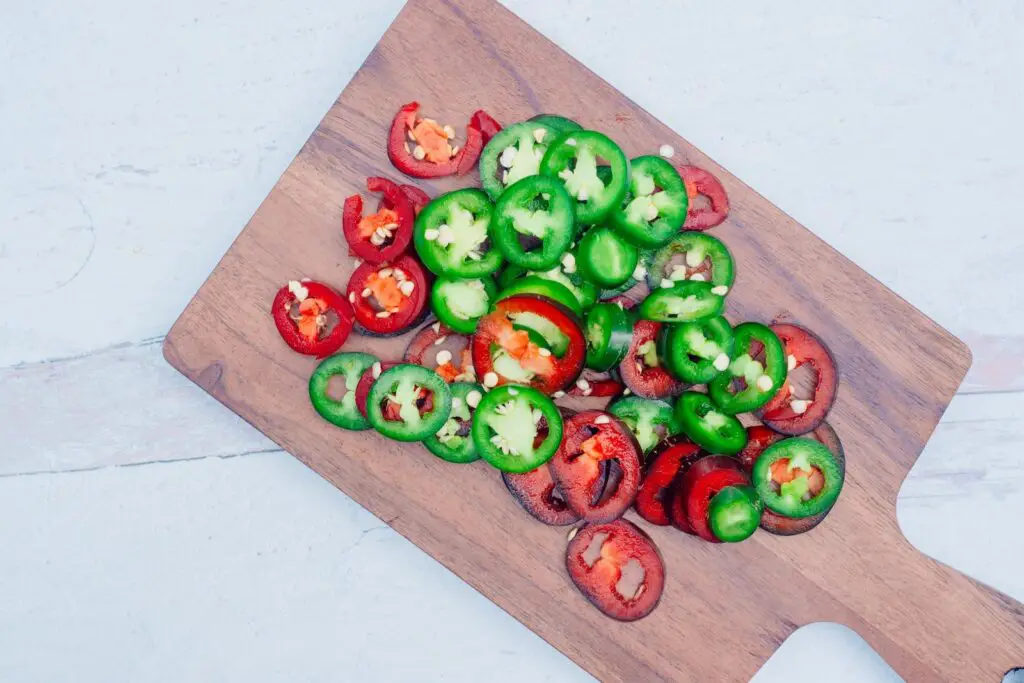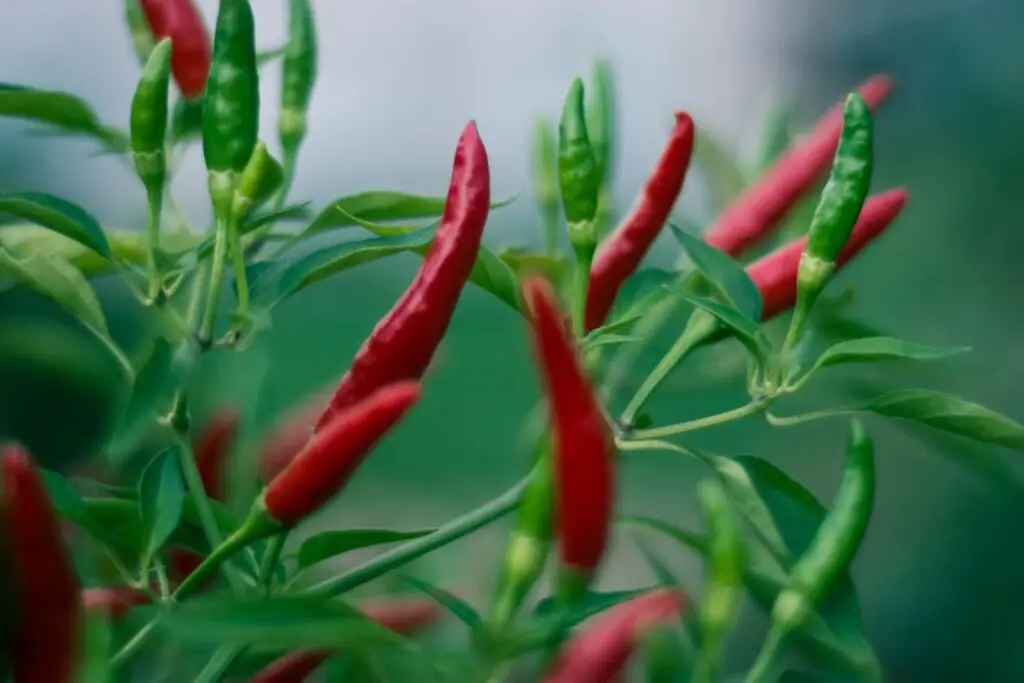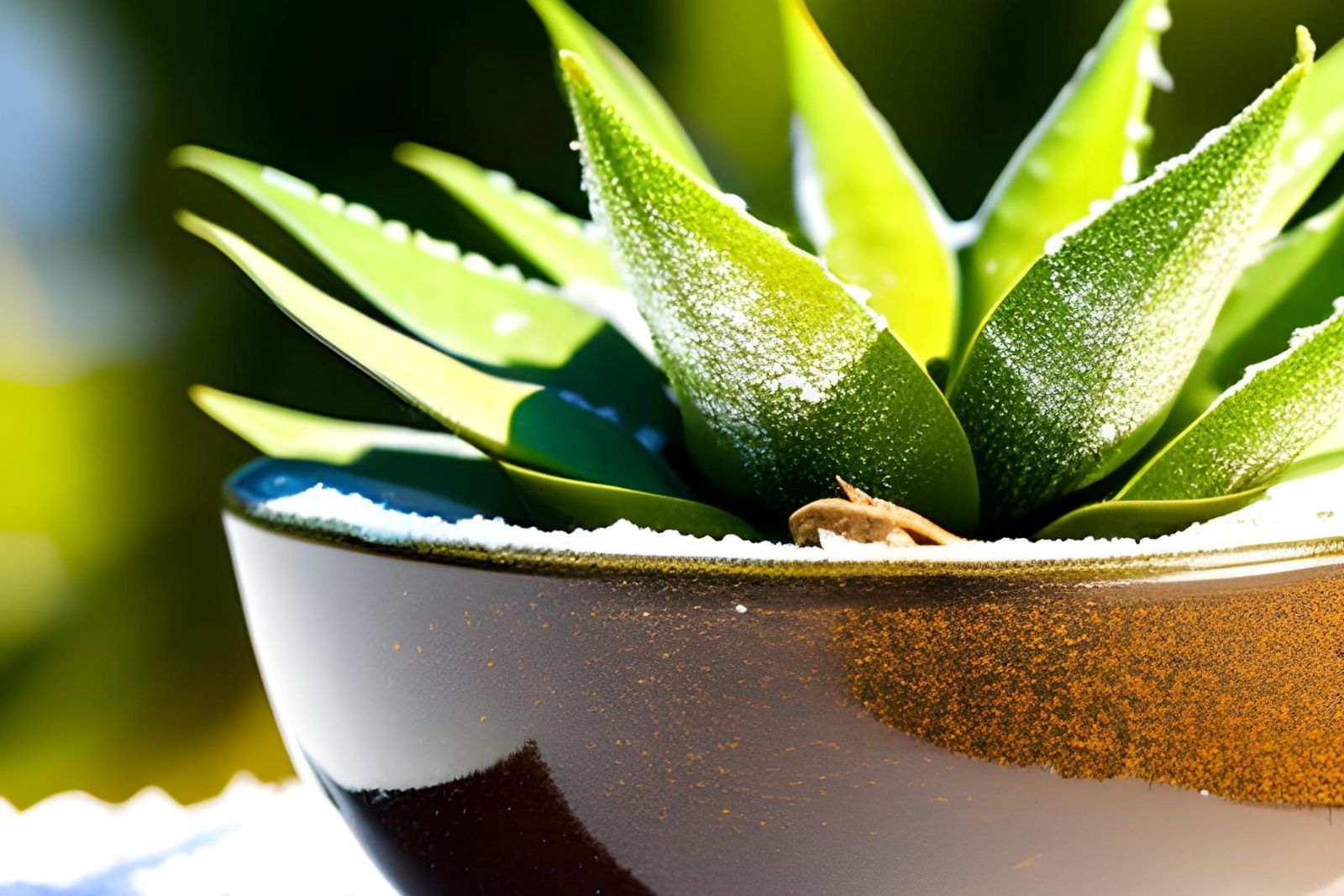
Aloe vera is a popular succulent known for its numerous health benefits and soothing properties. Whether you grow aloe vera plants at home or have purchased fresh leaves, freezing aloe vera gel can be a convenient way to preserve its therapeutic qualities for future use. Freezing aloe vera allows you to have a readily available supply of the gel, which can be used for soothing sunburns, treating skin irritations, or adding to homemade beauty and skincare products. By properly preparing and storing aloe vera gel for freezing, you can ensure its longevity and retain its beneficial properties. With frozen aloe vera gel at your disposal, you can enjoy the soothing and healing benefits of this versatile plant whenever the need arises.
Here are the simple steps to freeze aloe vera:
Step 1: Prepare the aloe vera
To begin the process of freezing aloe vera, it’s important to start with fresh and mature leaves. Selecting the right leaves ensures that you obtain high-quality gel that retains its beneficial properties even after freezing. Here’s a breakdown of why each step is important:
- Select fresh and mature aloe vera leaves:
Choose leaves that are plump, green, and free from any signs of damage or browning. Fresh leaves contain a higher concentration of the gel and are less likely to have undergone any deterioration. Look for leaves that appear healthy and vibrant, indicating that they are at their peak.
- Cut the leaves close to the base:
Using a sharp knife or scissors, carefully cut the leaves as close to the base as possible. This allows you to obtain a generous amount of gel from each leaf. By cutting near the base, you ensure that you have access to the gel-filled inner part of the leaf, which is the part used for various applications.
- Opt for leaves that are at least four inches long:
Choosing leaves that are at least four inches long ensures that you have an adequate amount of gel to work with. Smaller leaves may not yield enough gel to make freezing worthwhile. The size of the leaves also affects the ease of extraction, as larger leaves tend to have more accessible gel.
Step 2: Extract the gel
After obtaining fresh aloe vera leaves, the next step is to extract the gel. This process involves removing the protective outer layer of the leaves and scooping out the gel-filled inner portion. Here’s a detailed explanation of each step:
- Wash the leaves:
Thoroughly rinse the aloe vera leaves under cold running water. This helps remove any dirt, debris, or surface contaminants that may be present. Washing the leaves ensures that the gel you extract is clean and free from impurities.
- Pat dry the leaves:
After washing, gently pat dry the leaves with a clean towel. Removing excess moisture helps provide better grip and control when handling the leaves. Dry leaves also prevent dilution of the gel and maintain its consistency during the extraction process.
- Slice off the spiky edges:
Using a sharp knife, carefully trim off the spiky edges of the leaves. These edges can be sharp and potentially cause injuries, so removing them ensures safe handling. It also helps prepare the leaves for slitting and accessing the gel inside.
- Slit the leaves lengthwise:
With the spiky edges removed, make a lengthwise slit on one side of each leaf. This allows you to expose the gel-filled inner part of the leaf. Take care not to cut too deep to avoid damaging the gel or puncturing the other side of the leaf.
- Scoop out the gel:
Using a spoon or a butter knife, gently scoop out the translucent gel from the slit leaves. Start from one end and work your way along the length of the leaf. Be cautious and gentle to avoid any contamination or damage to the gel. Transfer the extracted gel to a clean bowl or container.
By following these steps, you effectively extract the gel from the aloe vera leaves, which is the valuable part used for freezing. Washing the leaves removes impurities, while removing the spiky edges ensures safety during handling. Slitting the leaves exposes the gel, and careful scooping allows you to collect the gel for further processing and freezing.
Can I freeze aloe vera as a whole leaf?
Freezing aloe vera as a whole leaf is possible, but it is not the most recommended method. The gel inside the leaves has a higher water content, which can result in a more icy texture when frozen. It is generally more effective to extract the gel from the leaves, portion it, and freeze the gel separately for better preservation and ease of use.
Step 3: Portion the gel
Once you have extracted the aloe vera gel, the next step is to decide how you want to portion it for freezing. This step allows you to tailor the frozen aloe vera to your specific needs and usage preferences. Here’s an explanation of the different options available:
- Small portions:
If you often use aloe vera gel in specific quantities, such as for topical applications or adding to smoothies, freezing it in small portions can be convenient. One method is to use an ice cube tray. Pour the gel into the individual compartments of the tray, filling them up to about 3/4 full. This allows room for expansion during freezing. Once frozen, you can easily pop out the gel cubes as needed, making it simple to thaw and use precise amounts.
- Whole portions:
If you anticipate using larger quantities of aloe vera gel at once, freezing it in larger portions may be more suitable. In this case, transfer the extracted gel into airtight containers or freezer bags. Consider the amount you typically use in one session or the amount needed for specific recipes. By freezing the gel as a whole portion, you can defrost the desired amount when needed, reducing the number of times you need to thaw and refreeze the gel.
The choice between small portions and whole portions depends on your preferences and how you typically use aloe vera gel. Freezing in small portions provides convenient and ready-to-use quantities, while freezing in whole portions allows for flexibility in adjusting the amount as per your requirements.
Remember to consider your anticipated usage and the convenience factor when deciding how to portion the gel for freezing. This step ensures that you have the right amount of aloe vera gel available whenever you need it, without any unnecessary waste or inconvenience.
Step 4: Package the aloe vera gel
Proper packaging is crucial to ensure that the aloe vera gel remains fresh, protected from freezer burn, and maintains its quality throughout the freezing process. Here’s an explanation of why packaging is important and how to do it effectively:
- Transfer to airtight freezer-safe containers or bags:
After portioning the aloe vera gel, transfer it to suitable containers or resealable freezer bags. Opt for containers or bags specifically designed for freezer use, as they are durable, resistant to low temperatures, and help maintain a proper seal. Airtight containers or bags prevent air and moisture from entering, which can lead to freezer burn and deterioration of the gel.
- Ensure tight sealing:
When placing the gel portions in the containers or bags, make sure to tightly seal them. Check for any gaps or openings that could allow air or moisture to enter. A secure seal minimizes the risk of freezer burn and helps preserve the texture, freshness, and quality of the aloe vera gel.
- Protection from air and moisture:
By packaging the gel in airtight containers or bags, you create a barrier that prevents air and moisture from coming into contact with the gel. Exposure to air and moisture can cause crystallization and negatively impact the texture and quality of the gel. The airtight packaging keeps the gel in optimal condition, allowing it to retain its beneficial properties.
Proper packaging is essential to maintain the integrity of the aloe vera gel during freezing. It protects the gel from freezer burn, which can result in the formation of ice crystals and affect the texture and taste. By preventing air and moisture from reaching the gel, you preserve its freshness, nutrients, and soothing properties.
Remember to label the containers or bags with the contents and date before placing them in the freezer. This labeling helps you identify and track the frozen aloe vera gel, ensuring that you use the oldest portions first and maintain proper rotation.
Step 5: Label and date the container
Labeling and dating the containers or bags containing the frozen aloe vera gel is an important step to maintain organization, track storage time, and ensure that you use the gel in a timely manner. Here’s an explanation of why labeling is crucial and how to do it effectively:
- Avoid confusion:
Labeling each container or bag with the contents (aloe vera gel) prevents confusion when you have multiple items in the freezer. This way, you can easily identify the aloe vera gel among other frozen items, preventing mix-ups or accidental use of the wrong product.
- Track storage time:
By including the date of freezing on the label, you establish a record of when the aloe vera gel was frozen. This helps you keep track of its storage time and ensure that you use the gel within the recommended duration. Aloe vera gel can typically be stored in the freezer for up to six months, but by labeling it, you can monitor and prioritize usage accordingly.
- Use oldest gel first:
Labeling containers or bags with the date of freezing allows you to practice proper rotation of the frozen aloe vera gel. By using the oldest gel first, you ensure that none of the portions remain in the freezer for an extended period, which could affect the quality or potency of the gel. Following a first-in, first-out (FIFO) approach ensures optimal utilization of the frozen gel.
When labeling the containers or bags, consider using a waterproof marker or adhesive labels specifically designed for freezer use. These ensure that the labels remain intact and legible even in the freezing temperatures. Place the label on a prominent spot, such as the front or top of the container, for easy visibility and identification.
By taking the time to label and date the containers or bags, you establish an organized system for storing and using the frozen aloe vera gel. This practice helps maintain freshness, track storage time, and prioritize consumption, ensuring that you make the most of the frozen gel while it remains in its best condition.
Step 6: Freeze the aloe vera gel
After properly packaging and labeling the aloe vera gel, the final step is to freeze it. Freezing the gel effectively preserves its freshness and extends its shelf life. Here’s an explanation of how to freeze the aloe vera gel properly:
- Choose an appropriate freezer spot:
Select a spot in your freezer where the labeled containers or bags can be placed securely and won’t be disturbed or crushed. Avoid placing them near the freezer door or in areas where they may be easily bumped or jostled. Ensuring the containers or bags remain undisturbed during freezing helps maintain their integrity.
- Set the freezer temperature:
Ensure that your freezer is set at or below 0°F (-18°C). This temperature is necessary to facilitate proper freezing and to maintain the quality of the aloe vera gel. It helps prevent the formation of large ice crystals and preserves the texture, nutrients, and beneficial properties of the gel.
- Allow space for air circulation:
Leave enough space between the containers or bags in the freezer to allow for proper air circulation. Adequate air circulation promotes uniform freezing and helps maintain the optimal temperature within the freezer. This ensures that the gel freezes evenly and reduces the risk of freezer burn.
- Leave undisturbed for at least 24 hours:
Once placed in the freezer, leave the aloe vera gel undisturbed for at least 24 hours or until it is completely frozen. This duration allows ample time for the gel to freeze solid and ensures that the freezing process is fully completed. Avoid opening the freezer unnecessarily during this time to maintain a consistent temperature.
Remember to always consult the manufacturer’s instructions or recommendations for your specific freezer model to ensure proper freezing conditions and to maximize the quality and longevity of the frozen aloe vera gel.
Other related questions?
How long can aloe vera last in the freezer?
Aloe vera can last in the freezer for approximately 6 months. Properly frozen and stored aloe vera gel can maintain its quality, freshness, and beneficial properties for this duration. It is important to label the containers or bags with the freezing date and practice proper rotation, using the oldest gel first to ensure optimal usage and quality.
How do you defrost aloe vera?
To defrost aloe vera gel, remove the desired portion from the freezer and transfer it to the refrigerator. Allow the gel to thaw slowly in the refrigerator for several hours or overnight. Once thawed, gently stir the gel to restore its consistency before using it for topical applications or incorporating it into recipes. Avoid using heat or microwaving methods for defrosting, as they can compromise the quality and beneficial properties of the gel.
Can you refreeze aloe vera?
It is generally not recommended to refreeze aloe vera once it has been thawed. The process of thawing and refreezing can lead to a loss of quality, texture, and beneficial properties of the gel. To maintain the best quality and freshness, it is advisable to thaw only the amount needed and use it promptly, rather than refreezing it.
How do I know if the aloe vera has gone bad after being frozen?
After freezing, if aloe vera gel develops an off-putting odor, unusual coloration, or shows signs of mold growth, it may indicate spoilage and should not be consumed. Additionally, changes in texture, such as excessive ice crystal formation or a grainy consistency, may suggest a loss of quality. It is essential to use visual and sensory cues to assess the condition of the aloe vera gel before using it, and when in doubt, it is best to discard it to avoid potential health risks.
Can you reuse frozen aloe vera?
Reusing frozen aloe vera gel is not recommended due to potential quality and safety concerns. Once aloe vera gel has been thawed and used, it is best to discard any leftovers. Freezing and thawing can affect the texture, freshness, and beneficial properties of the gel, making it less desirable for reuse. It is advisable to freeze aloe vera in portioned amounts to minimize waste and ensure the best quality for each use.
Can I freeze aloe vera products like gels or creams bought from the store?
Freezing aloe vera products like gels or creams bought from the store is generally not recommended. These commercially produced products often contain additional ingredients that may not freeze well or may separate upon thawing, compromising their texture and effectiveness. It is best to follow the storage instructions provided by the manufacturer and store these products according to their specific guidelines.
Can I freeze aloe vera juice?
Freezing aloe vera juice is possible, but it is important to note that the texture and taste may change upon thawing. Aloe vera juice contains water, which can form ice crystals and alter its consistency. It is recommended to portion the juice into airtight containers or ice cube trays, label them, and freeze them promptly. Thaw the desired amount in the refrigerator and give it a gentle stir before consuming or using it in recipes.

